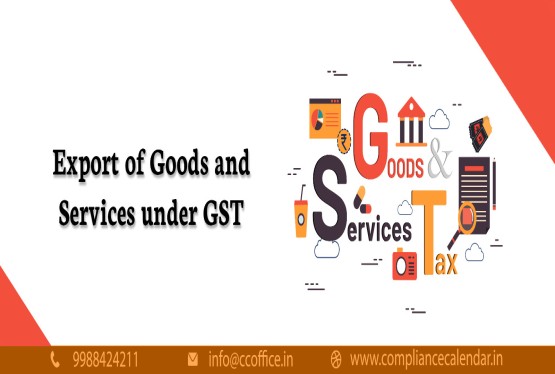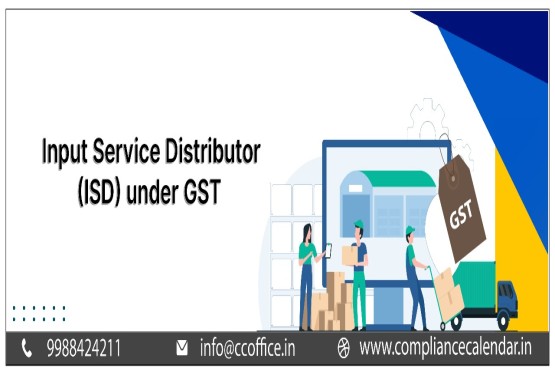The GSTR-9 Annual Return is a complete statement that must be filed by GST-registered taxpayers at the end of each financial year. It consolidates the summary of outward and inward supplies, input tax credits claimed, taxes paid, and various adjustments made throughout the financial year. Form GSTR-9 is applicable to regular taxpayers and plays a crucial role in maintaining transparency and compliance under GST laws.
What is GSTR-9?
GSTR-9 is an annual return form prescribed under Section 44 of the CGST Act, 2017. It is a summary return that includes data from all monthly or quarterly returns filed during a financial year, such as GSTR-1, GSTR-3B, and GSTR-2A/2B. It contains a detailed account of transactions made during the financial year categorized under CGST, SGST, IGST, UTGST, and Cess, including inward and outward supplies, input tax credits, tax liability, and refunds.
Applicability of Form GSTR-9
Form GSTR-9 is mandatory for all taxpayers registered under GST except for the following categories:
-
Casual Taxable Persons
-
Non-resident Taxable Persons
-
Taxpayers deducting TDS under Section 51 of the CGST Act
-
Input Service Distributors
-
Taxpayers collecting TCS under Section 52
Composition taxpayers are required to file Form GSTR-9A, but from FY 2019-20 onwards, GSTR-9A has been replaced with GSTR-4 for them.
Due Date for Filing GSTR-9
The due date for filing Form GSTR-9 is 31st December of the following financial year. For example, for the financial year 2023-24, the GSTR-9 must be filed by 31st December 2024. Timely filing is important to avoid penalties and interest.
Turnover Limit for Filing GSTR-9
The GST Council has exempted businesses with annual turnover up to Rs. 2 crore from filing Form GSTR-9 for FY 2017-18 to FY 2023-24. However, taxpayers with turnover above Rs. 2 crore must file GSTR-9 mandatorily. For businesses with turnover above Rs. 5 crore, Form GSTR-9C (reconciliation statement) is also applicable.
Types of GSTR-9 Forms
The GSTR-9 Annual Return is classified into the following types:
-
GSTR-9: For regular taxpayers who file GSTR-1 and GSTR-3B.
-
GSTR-9A: For composition taxpayers (applicable only up to FY 2018-19).
-
GSTR-9B: Applicable for e-commerce operators required to collect TCS (currently on hold).
-
GSTR-9C: Reconciliation statement and self-certification for taxpayers with turnover above Rs. 5 crore.
Format and Contents of Form GSTR-9
Form GSTR-9 is divided into six parts and 19 tables. Each section has a specific purpose and must be filled carefully with data reconciled from monthly/quarterly GST returns and books of accounts.
Part I: Basic Details This part includes:
-
Financial Year
-
GSTIN
-
Legal Name
-
Trade Name (if any)
These fields are auto-populated based on the GST registration details.
Part II: Details of Outward and Inward Supplies Made During the Financial Year
This section covers taxable outward supplies, advances, inward supplies under reverse charge, and amendments. It includes:
-
Supplies made to registered and unregistered persons
-
Exports
-
SEZ supplies
-
Deemed exports
-
Amendments through credit/debit notes
This data is largely derived from GSTR-1 and GSTR-3B.
Part III: Input Tax Credit (ITC)
This part contains detailed Input Tax Credit (ITC)-related information:
-
ITC availed through various sources
-
ITC reversed or ineligible
-
Transitional credits through TRAN-I and TRAN-II
-
Comparison with ITC in GSTR-2A/2B
Discrepancies must be carefully reconciled and reasons should be identified.
Part IV: Tax Paid Details
This part records the tax liability declared and paid through GSTR-3B, including:
-
Tax payable and paid under IGST, CGST, SGST/UTGST, and Cess
-
Payments made through cash or ITC
-
Interest, late fee, penalty, and others
Part V: Transactions of Previous FY Declared in Current FY
Here, the taxpayers report any transactions related to the previous financial year but declared from April to September of the following year. It includes:
-
Amendments in invoices
-
ITC reversal
-
ITC claimed
-
Differential tax paid
Part VI: Other Information
Additional information such as:
-
Refunds and demands
-
Supplies received from composition dealers
-
Job work transactions
-
Goods sent on approval
-
HSN-wise summary of inward and outward supplies
-
Late fee details
must be disclosed in this section.
Latest Updates 2024 on GSTR-9 Annual Return
The 53rd GST Council meeting (June 2024) granted relaxation from filing GSTR-9 for FY 2023-24 for taxpayers with turnover below Rs. 2 crore. This was officially notified via CGST Notification 14/2024 dated 10th July 2024.
The 55th GST Council meeting (December 2024) clarified the late fee under Section 47(2) of the CGST Act, 2017, for delayed GSTR-9 filing.
Late Fees and Penalties for Non-Filing of GSTR-9
From FY 2022-23 onwards, late fees are categorized as per turnover:
-
Up to Rs. 5 crore: Rs. 50/day (Rs. 25 CGST + Rs. 25 SGST), capped at 0.04% of turnover
-
Rs. 5-20 crore: Rs. 100/day (Rs. 50 CGST + Rs. 50 SGST), capped at 0.04%
-
More than Rs. 20 crore: Rs. 200/day (Rs. 100 CGST + Rs. 100 SGST), capped at 0.5%
For FY 2017-18 to 2021-22, amnesty schemes allowed a waiver of late fee exceeding Rs. 20,000 if returns were filed by 30th June 2023.
Process to File GSTR-9 Annual Return Online
-
Ensure GSTR-1 and GSTR-3B are filed for the relevant year.
-
Reconcile ITC, sales, and tax paid with books and returns.
-
Communicate with vendors for mismatch rectification.
-
Use the GSTN portal or third-party software to prepare the return.
-
Fill all sections and validate data.
-
Pay any additional liability via DRC-03.
-
Submit and file GSTR-9 on the GST portal.
Importance of Accurate Filing of Form GSTR-9
GSTR-9 is not just a formality; it serves as a vital tool for:
-
Validating the correctness of monthly returns
-
Ensuring accurate tax payment and ITC claims
-
Facilitating departmental audits
Any mismatches, non-disclosures, or inaccurate entries may lead to notices, audits, and penalties.
Conclusion
Filing the GSTR-9 Annual Return is essential for ensuring GST compliance and transparency in financial reporting. It consolidates a taxpayer's yearly data and highlights any discrepancies in returns filed throughout the year. Businesses must maintain accurate records and reconcile their data before filing Form GSTR-9 to avoid penalties and ensure peace of mind. Whether through the GST portal or reliable compliance software, timely and correct filing of GSTR-9 is important for smooth business operations under GST.
If you need any support in filling GSTR-9 Annual Return, you can connect with Compliance Calendar Experts at email info@ccoffice.in or Call/Whatsapp at +91 9988424211.
Frequently Asked Questions (FAQs) on GSTR-9 Annual Return Filing
Q1. Who is required to file GSTR-9?
Ans. GSTR-9 must be filed by all taxpayers registered under GST, except for input service distributors, casual taxable persons, non-resident taxable persons, and persons paying TDS/TCS under Sections 51 and 52 of the CGST Act.
Q2. What is the due date for filing GSTR-9?
Ans. The due date for filing Form GSTR-9 is 31st December of the financial year following the relevant financial year. For instance, GSTR-9 for FY 2023-24 must be filed by 31st December 2024.
Q3. Is it mandatory to file GSTR-9 for businesses with turnover below Rs. 2 crore?
Ans. No, filing GSTR-9 is optional for taxpayers with annual turnover up to Rs. 2 crore from FY 2017-18 to FY 2023-24, as per GST Council recommendations.
Q4. What is the penalty for late filing of GSTR-9?
Ans. Late fees for filing GSTR-9 after the due date depend on the turnover. It ranges from Rs. 50 to Rs. 200 per day, subject to a maximum of 0.04% to 0.50% of turnover in the state or union territory.
Q5. Can GSTR-9 be revised after filing?
Ans. No, once filed, GSTR-9 cannot be revised. Hence, it is important to reconcile and verify all data before submission.
Q6. What is the difference between GSTR-9 and GSTR-9C?
Ans. GSTR-9 is the annual return, while GSTR-9C is a reconciliation statement and certification required for taxpayers with a turnover exceeding Rs. 5 crore, comparing audited financials with GST returns.
Q7. Do I need to file GSTR-9 separately for each GSTIN?
Ans. Yes, GSTR-9 must be filed individually for each GSTIN, even if multiple GSTINs are registered under the same PAN.
Q8. What documents are required to file GSTR-9?
Ans. The key documents include GSTR-1, GSTR-3B, GSTR-2A/2B, books of accounts, purchase and sales registers, and reconciliation statements.









_crop10_thumb.jpg)


















































































_for_FY_2025-26_crop10_thumb.jpg)












_learn_crop10_thumb.jpg)








_Filing_Due_Dates_for_FY_2024-25_learn_crop10_thumb.jpeg)

















